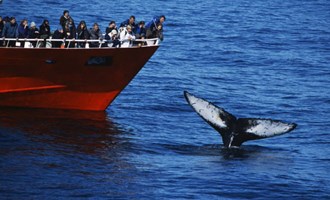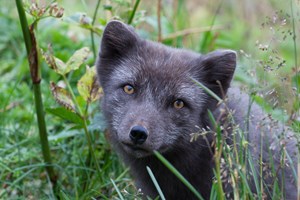Mink
Mink is part of the family of Mustelidae and the kind that lives in Iceland belongs to the North American Mink called Mustela Vison. This kind used to be popular for breeding because of the fur, that was used in clothing.

The mink was first imported to Iceland from Norway in the year 1931. The Mink was not supposed to live wild in Iceland, but he soon escaped from the cages and began to spread across the country. The spreading of the Mink took quite some time, last time he settled in the area around Skaftafell and in Öræfi, but the harsh weather in those areas made it difficult for him to survive.
The Mink has a great adaptability and has adapted well to Icelandic nature. He has very few natural enemies and has therefore lived without much disturbance. The Mink, on the other hand, has had a major impact on the biosphere in Iceland. He is vicious and attacks birds, eggs and hatchlings during the summer and can therefore have a significant impact on the birdlife of the areas he lives in. For example, the mink is believed to have impact on the extinction of the Water rail (Rallus aquaticus) and he also affected laying of the Black guillemot (Cepphus grylle).
The mink marks his own territories that he protects from other minks. He tries to find a place that is suitable, such as along river banks, or around the edges of lakes or marshes. The mink often finds a territory near water, but he is a good swimmer and diver, so he can use that to escape if he needs to. He also catches fish if he has the chance.
The mink is about 35 to 42 cm long and the tail is about 12 to 15 cm. He has short legs and it’s a long gap between his feet, his walking can therefore be a little bit strange, especially if he has to go fast. There is a big difference between the weight of the female and male, the females are about 600 grams, while the males can reach up to 1200 grams. The most common color of the mink is dark brown, but there are also other colors of the mink in Iceland such as white or black.
The breeding season is during the spring and each female can mate with more than one male and the cubs can therefor have many fathers. The mother raises the cubs by herself and at the end of August they are usually ready to leave home to find their own territory. The oldest minks in Iceland are likely to be five to seven years old.

